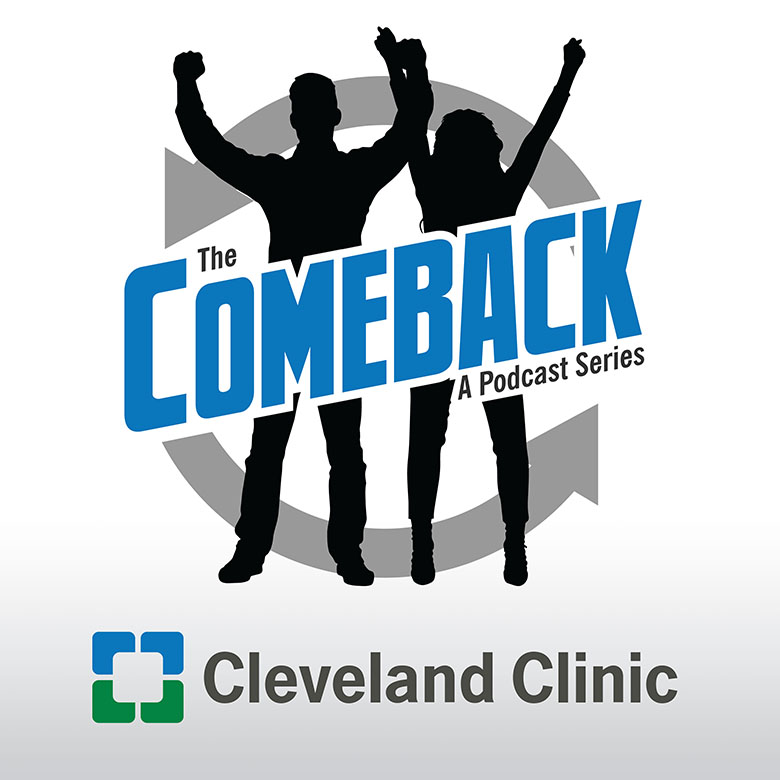Should Your Patent Foramen Ovale (PFO) Be Closed?

Subscribe: Apple Podcasts | Podcast Addict | Buzzsprout | Spotify
Should Your Patent Foramen Ovale (PFO) Be Closed?
Podcast Transcript
Announcer: Welcome to Love Your Heart brought to you by Cleveland Clinics, Sydell and Arnold Miller Family Heart and Vascular Institute. These podcasts will help you learn more about your heart, thoracic and vascular systems, ways to stay healthy and information about diseases and treatment options. Enjoy.
Dr. Krishnaswamy: Patients often ask me about the role of closure of patent foramen ovale or PFO. Sometimes just incidentally found or sometimes found in the workup of a stroke. And this is an especially germane conversation given the recent approval by the Food and Drug Administration of the Amplatzer PFO closure device, indicated for the closure of PFO in patients with what's called a cryptogenic stroke.
What I'd like to do is go through from a patient perspective, what are the questions that you should be asking yourself or asking your doctors about whether PFO closure may or may not be right for you.
So patent foramen ovale consists of the two membranes that come together in the inner atrial septum, called the septum secundum and the septum primum. Often times these membranes fuse together at the time of birth, though they're open during fetal development for the passage of blood from the mother to the developing fetus. However, when this doesn't close during childhood or adulthood, this is called a patent foramen ovale or patent fossa ovalis.
What you can see here in this figure is blood coming to the right atrium from the body, going through the fossa ovalis into the left atrium. On the right is an echocardiogram from an adult patient in whom this membrane did not close, so a PFO. And you can see bubbles that are introduced into the right atrium here that transit across the PFO here and end up in the left atrium. Now, you can imagine a scenario in which blood clots could similarly pass as these bubbles and once they end up in the left atrium, they can pass through to the aorta and then to the brain causing a stroke.
In those patients for whom we determine a PFO closure is necessary, we bring them to the cardiac catheterization lab. And under what we call a conscious sedation, so some IV pain medicine and sedative, with some local anesthetic, we do what's called a PFO closure procedure. You can see here, this is a patient who came to the Cath lab. You can see initially the bubbles over here in the right atrium, down to the left atrium, and then these bubbles in the aorta.
So we use either the Amplatzer or PFO occlusion device that was recently approved, or the Gore Cardioform device, which is a similar device. It just has not been approved for this indication because the trials haven't necessarily been done for these patients. This is what it looks like on the X-ray once it's in place. And you can see here now the bubbles come into the right atrium up here, but there are no bubbles to the left Atrium and no bubbles to the aorta.
So if PFO closure is necessary, that's how we do it. However, a PFO is a pretty common entity. So this was a trial done many years ago showing that between 20 and 40% of individuals, have a PFO depending on their age. And so it's not that all patients with a PFO are at a risk of a stroke from the PFO. Instead, patients that come in with a stroke really require a pretty thorough stroke evaluation. And that includes an evaluation for structural cardiac disease or disease of the heart muscles or heart valves that may contribute to stroke. Evaluation of cerebrovascular disease or cholesterol narrowings in the arteries of the brain or leading up to the brain, evaluation for hypercoagulable disorders or disorders that lead to abnormal blood clotting, evaluation of aortic arch atheroma or cholesterol buildup in the aorta itself that can then travel and cause a stroke, and the evaluation of cardiac arrhythmia or abnormal heart rhythms, and especially an abnormal heart rhythm called atrial fibrillation.
This is an abnormal heart rhythm that is very often associated with stroke. But we know from important trials that have been done that patients that come to the hospital with a stroke generally spend between 24 and 48 hours in the hospital, and during that time the cardiac monitoring that they're on may pick up atrial fibrillation as you see here, in about 2% of these patients.
However, if these same patients are sent home with a monitor that they wear for four weeks, we find that almost 15% of patients have atrial fibrillation. Often those are patients who need blood thinners to prevent them from having a stroke in the future. If all of these evaluations have been conducted and there doesn't appear to be a typical cause, a risk factor for the stroke, we then start thinking about the PFO as a potential causative agent or associative agent in this situation.
Here at the Cleveland Clinic, we've actually done research on this exact question for quite some time. This was a trial that we published about four years ago where we conducted what's called a Meta analysis or analysis of all the trials that have been published on PFO closure to reduce stroke. And what you see here as the bottom line, is that we found that there was in fact a reduction in recurrent stroke in those patients who underwent transcatheter closure or PFO closure.
But getting back then to the most recent FDA approval. This was based on the RESPECT trial. This enrolled 980 patients at a number of different sites who had a prior stroke and a PFO as designated by a transesophageal echocardiogram. Importantly and relevant to our prior discussion, they excluded patients who had atrial fibrillation, who had atherosclerosis or cholesterol buildup either in the arteries going to the brain or within the brain itself, or if there was an obvious other cause of a stroke for these patients. Ultimately, 499 patients received the Amplatzer closure device and 481 patients continued medical therapy that may have consisted of aspirin or clopidogrel or other types of blood thinners.
And ultimately what the investigators found and demonstrated at the recent TCT meeting just last week, was that when followed out to almost 10 years, that in those patients who received the PFO closure device shown here in blue, there was a 45% reduction in the rate of recurrent stroke in those patients that had PFO closure. And this was in fact a statistically significant difference in comparison to those patients who continued medical therapy alone.
So the bottom line, based on our clinical experience, number of trials over a number of years and most recently the RESPECT trial which was presented at the TCT meeting and led to FDA approval of the PFO closure device, is that not all patients with PFOs require closure. Stroke, as a result of PFO, is a relatively uncommon phenomenon and a thorough analysis of potential stroke risk factors is important prior to embarking on PFO closure. The lack of typical stroke risk factors makes the association between PFO and a stroke more likely for individual patients, and certain anatomic features of the PFO that we may understand based on transesophageal echo cardiography may be more risky for causing stroke. The RESPECT trial did demonstrate a reduction in recurrent stroke among carefully selected patients with a PFO who had a stroke. So we do think that in appropriately selected patients, PFO closure can be conducted with a high degree of safety and efficacy to reduce stroke in the future.
Thank you very much for your time.
Announcer: Thank you for listening. We hope you enjoyed the podcast. We welcome your comments and feedback. Please contact us at heart@ccf.org. Like what you heard, please subscribe and share the link on iTunes.

Love Your Heart
A Cleveland Clinic podcast to help you learn more about heart and vascular disease and conditions affecting your chest. We explore prevention, diagnostic tests, medical and surgical treatments, new innovations and more.


